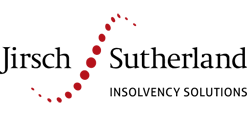While many small businesses are forging ahead after a couple of years dealing with the challenges of COVID-19, not all are doing it at the same speed – or at all. In fact, a multiple-speed situation is emerging with strong performers racing ahead while others are struggling to stay in the race.
Interest rates and inflationary forces
The COVID lockdowns caused plenty of problems for businesses and individuals, and unfortunately there’s still plenty of headwinds. Rising interest rates is a key one. In August, the Reserve Bank of Australia raised rates by 50 basis points taking the cash rate to 1.85 per cent. This wasn’t unexpected; the bank has stressed it will keep raising rates until inflation is back in its target range of between 2-3 per cent.
Getting it back into this range may take a while. The inflation rate reached 6.1 per cent in the June quarter, the fastest annual increase since 2001. Consumers are paying more for most items including petrol, groceries and household costs, while the cost of new houses rose 9 per cent compared to a year earlier. The Federal Treasurer Jim Chalmers said inflation will get worse before it gets better.
Meanwhile, while unemployment is at a near 50-year low, companies are struggling to find workers. Minimum wages are on the rise, with the Fair Work Commission announcing the national minimum wage will increase by 5.2 per cent and the award minimum wage by 4.6 per cent.
Confidence under pressure
Overseas events are also affecting recovery. For example, there’s no end in sight for the supply chain issues that have plagued the economy for the past few years. The Australian Retail Association CEO Paul Zahra said the issues are likely to continue for at least another 18 months due to “the sheer volume of products and supplies within the global supply chain and the profound shortage of freight space on ships, shipping containers and pallets exacerbated by the limited flights into the country”.
And with these headwinds, confidence levels – both business and consumer – are affected. Consumer sentiment fell for the ninth straight month in August according to the Westpac-Melbourne Institute index of consumer sentiment. It fell 3 per cent in the month from July when it had also dropped 3 per cent. Over the year, the index is down 22 per cent at 81.2.
Business confidence has taken a hammering but did bounce back slightly in July. The National Australia Bank’s monthly business survey found business confidence rose back above average and conditions strengthened as businesses reported new record levels of capacity utilisation, cost growth and price rises. NAB’s Chief Economist Alan Oster said the result was something of a surprise. “Inflation and rising interest rates are clouding the outlook,” he said. “And there are growing concerns about the global economy, but businesses seem to have a fairly positive outlook at the moment.”
But are we heading into a recession as some economists believe? Views on this are mixed. Goldman Sachs puts the odds of a recession in Australia at 25 per cent with a sharp US downturn taking the odds to 50-60 per cent. But whether Australia does experience a recession, or a sharp correction, with no government bailouts for individuals or businesses as was the case during the pandemic, a sharp rise in insolvencies is likely.
Insolvencies creeping up
Businesses are already facing financial difficulties. CreditorWatch’s July Business Risk Index found administrations were 46 per cent higher and court actions were up 54 per cent compared with the same period last year. It attributed the rise to supply chain issues, falling consumer confidence, rising interest rates and labour shortages. It added further ATO legal action, garnishees and director penalty notices would drive the national default rate up from its current level of 5.8 per cent.
CreditorWatch CEO Patrick Coghlan said that the “hands off” approach to debt collection adopted by the ATO and many lenders during the pandemic is over. “The massive rise in external administrations is a disturbing trend – now up 50 per cent since April,” he said. “Court actions are back to pre-COVID levels and the ATO has stated it is ramping up legal action for outstanding debts. With business and consumer confidence declining and inflation and interest rates on the rise, this doesn’t bode well for businesses, particularly SMEs whose cash reserves were depleted during the pandemic and are now operating on much tighter margins.”
Lack of support leaves some behind

Small Business Australia Director Bill Lang recognises the issues small businesses are currently facing and likens the current situation to a peloton in a race – “some businesses are moving forward while others are falling away at the back”. “I believe we’re currently in a four-speed economy – where one speed is ‘reverse’. I feel many businesses are moving forward but there are those that just can’t cope,” he says. “There’s a sub-set that’s being left behind.”
One issue, Lang says, is that some of those who are struggling likely relied on the government help that was made available during the pandemic to stay afloat. “This helped them remain in business and without it, they would probably have closed down,” he says. “The government has made it clear it won’t be providing any more financial help this time around so those struggling will find it more difficult to continue. It is disappointing that the past and present governments have not altered bankruptcy laws to assist non-corporate enterprises that are now failing as a result of the pandemic responses and the depletion of their personal financial resources.”
Lang adds with almost one in three small businesses unable to find staff, the workload pressures on owners, their families and existing staff members is severe, leading some to consider leaving it behind. “In cities like Melbourne, the small businesses that support Monday to Friday office workers are facing, at best, a three-day work week in the offices. Unfortunately, all fixed overheads like rent are a seven-day cost, and demand is simply not high enough.”
Seek action early
Meanwhile, Jirsch Sutherland Partner Andrew Spring says that it’s usually the business owners who are falling behind that are the least likely to seek help. “These people are exhausted, damaged and don’t have the energy to continue,” he says. “Their mental health is suffering and it’s crucial that they seek help by contacting their adviser who can talk them through options, which may include insolvency, but not always. Insolvency is often referred to as a ‘fall’ but very often it’s the opposite. It can offer those facing challenges a safety net. But you need to take action to understand your options.”
Mental health a key concern With financial well-being and mental health going hand in hand, it’s important to be aware of any emotional stress and to acknowledge when help is needed. Studies show mental health is becoming more of an issue: the ACM Heartbeat of Australia study found 30 per cent of respondents had concerns about it. Jirsch Sutherland Partner Andrew Spring says financial challenges can have a big impact on a person’s mental health and relationships. “Taking early action around any financial issues can help,” he says. “It’s good to see more people overall are open to seeking help about their emotional issues, especially if financial stress is a key cause of them.” Spring adds it’s also important to break down the stigma that is often associated with experiencing financial difficulties. “We see time and time again the relief people feel once they seek help when they’re financially struggling,” he says. “Carrying that type of burden is incredibly stressful.” |


